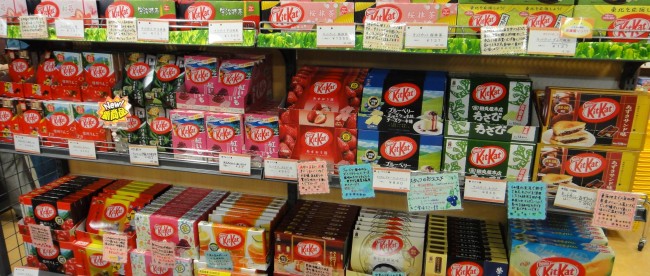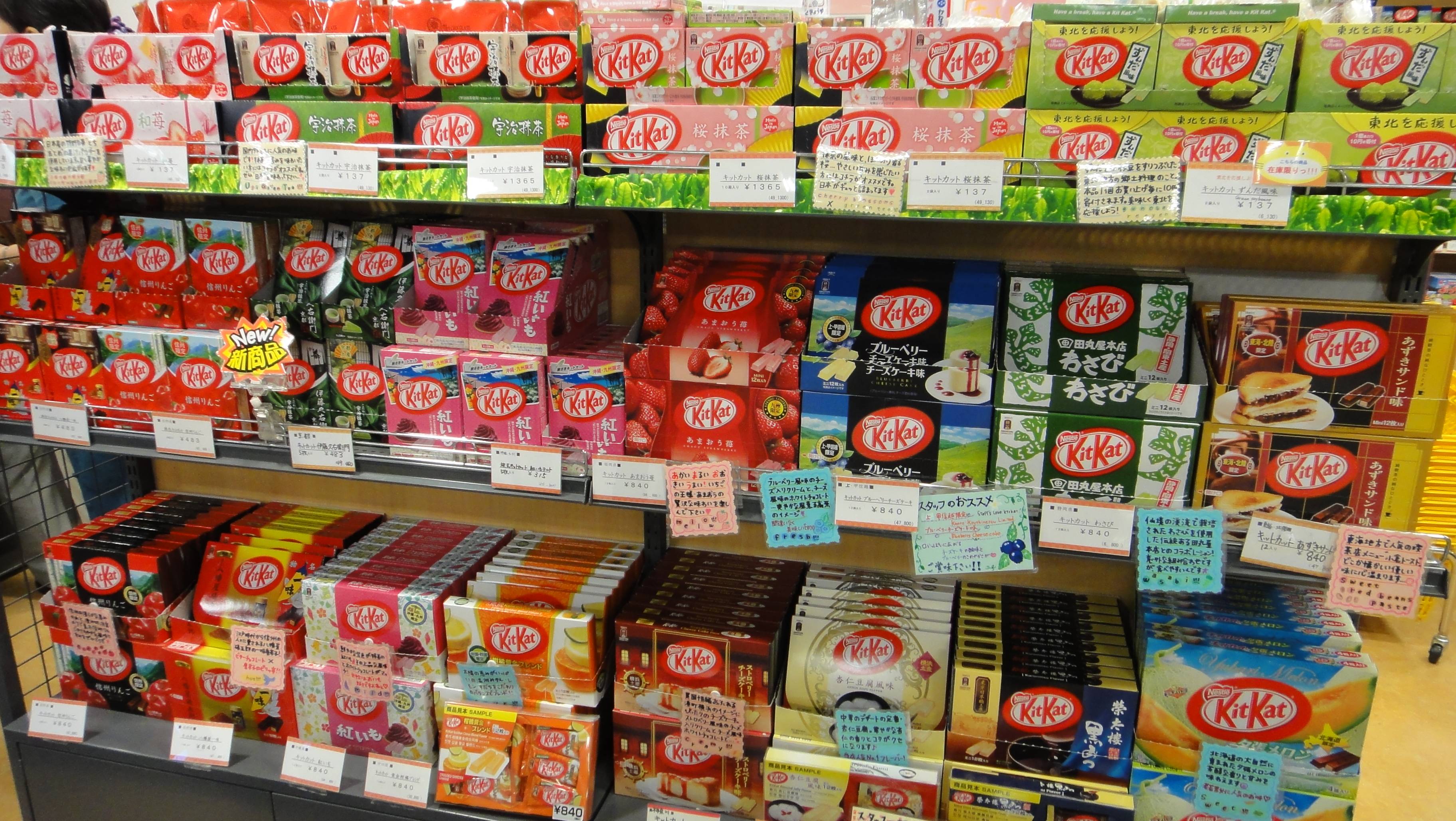Japan’s Lucky Break

It’s a trend that’s recently taken American grocery stores by storm: limited-edition and oddly-flavored Oreo cookies. The classic cookie dates back to 1912 and is, in its most basic form, pretty simple — two chocolate-flavored wafer cookies on either side of a white, sugar-sweet cream filling. Recently, though, the Oreo has taken on a lot of different looks and tastes — and it’s gotten a bit out of hand. There are chocolate chip cookie-themed Oreos, birthday cake and red velvet, mint and peppermint, cinnamon bun, and even Swedish Fish-flavored ones. And that’s hardly an exhaustive list.
It’s crazy, yes. But get on a plane and look at a different snack item, and you’ll see something even crazier.

In the United States, excluding size differences, there are only a half-dozen types of Kit Kats, if that. But, as you can see, that’s not true everywhere. Pictured above are dozens of different flavored Kit Kats as seen in a Japanese grocery store (via Imgur). And that’s just a sampling of some of the more than 300 options which have graced Japanese stores since the year 2000. Among them are some items which wouldn’t fly in the United States: green tea, apple, sweet purple potato, wasabi, and even sake — and a whole lot more. In Japan, Kit Kat transcend mere candy bars — they’re a cultural touchstone.
And the reason? Most likely, it’s due to a linguistic accident.
Nestle — the makers of Kit Kat outside the U.S. — has been selling Kit Kats in Japan since the 1970s, but entered the Japanese market with gusto less than twenty years ago. The marketing campaigns around the candy have been slick and creative — they repurposed very little, not even the popular “break me off a piece of that Kit Kat bar” jingle from the United States campaign. But one thing Nestle didn’t do is change the product’s name. In Japan, like in the U.S., the candy is called “Kit Kat,” using English letters.
And that was a stroke of good luck — literally. “Kit Kat” sounds like “Kitto Kattsu,” which, per the BBC, is Japanese for “I hope you will win.” And it’s a relatively common saying. As CNN reported, kitto katsuo “is a term of good luck often used by students before their exams.” Students and others, therefore, began gifting the chocolate bars (when they were still chocolate bars) to one another as a way to wish one another well.
Nestle didn’t make this association intentionally, but they certainly noticed — and capitalized on it. The chocolatier partnered with Japan Post, the now-privatized Japanese postal service, to make it easy to send a friend or loved one a little bit of luck. As Advertising Age explained:
[The two parties] create[d] “Kit Kat Mail,” a postcard-like product sold only at the post office that could be mailed to students as an edible good-luck charm. Nestle decorates post offices with a cherry blossom theme that coincides with Japan’s annual exam period. It also stocks a sales point in each post office.
The false cognate — and the postal partnership — elevated Kit Kats to the top of the candy game in Japan and gave the company license to try all sorts of limited edition flavors. The efforts have been successful: from 2012 to 2014, Kit Kats were the country’s most popular confection, according to Wikipedia.
Bonus fact: Kit Kat’s Japanese empire has expanded beyond the grocery store candy counter. For example, there are eight high-end chocolatiers in Japan which sell nothing but Kit Kats and Kit Kat-related items — including a gold-leaf single-stick Kit Kat that goes for $15 or so. And that’s not even close to the limits being pushed. In 2014, the brand announced a partnership with a Japanese pizza chain to offer Kit Kat pizzas. As Kotaku reported (and that link has a picture of the pizza), the Kit Kat pies are “dessert pizzas” and are sweet, not pizza-y; they’re made of “mango and baked Kit Kats on pizza dough.” Alas, they weren’t very popular — the product appears to have been discontinued since.
From the Archives: Accidentally Awesome: The main story is about chocolate chip cookies, but the bonus item is a fun fact about Oreos.
Related: Want to try some off-flavored Kit Kats but don’t know where to begin? Here’s a sample pack of 14 random flavors. Beware, though: the product may melt before it gets to you.
